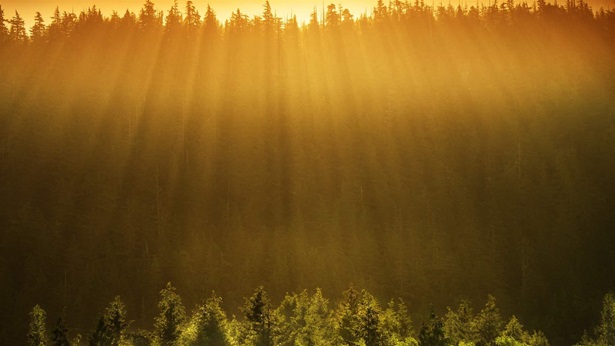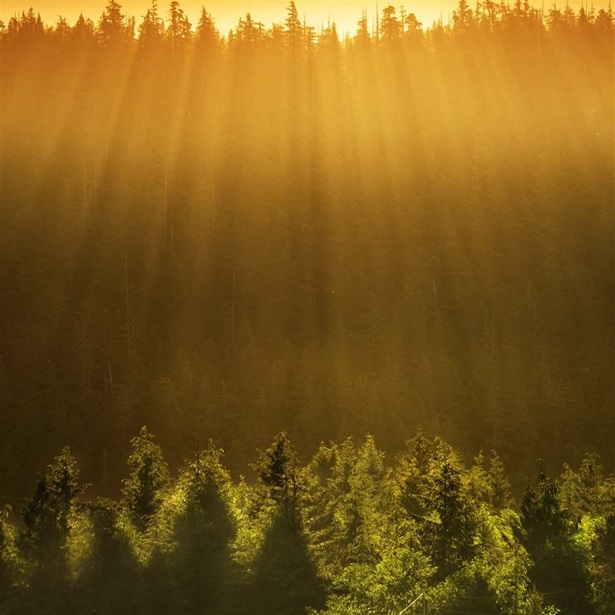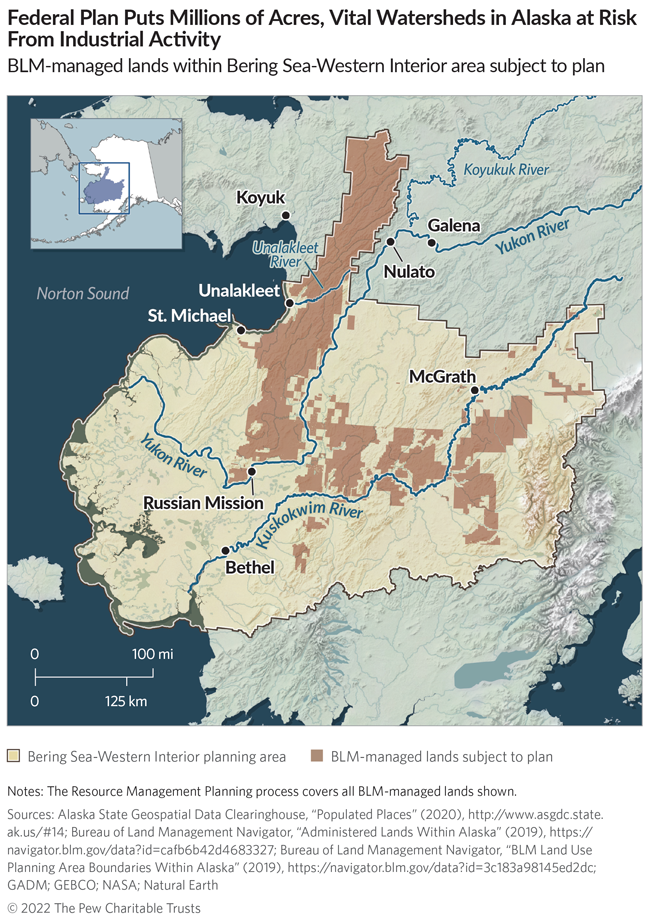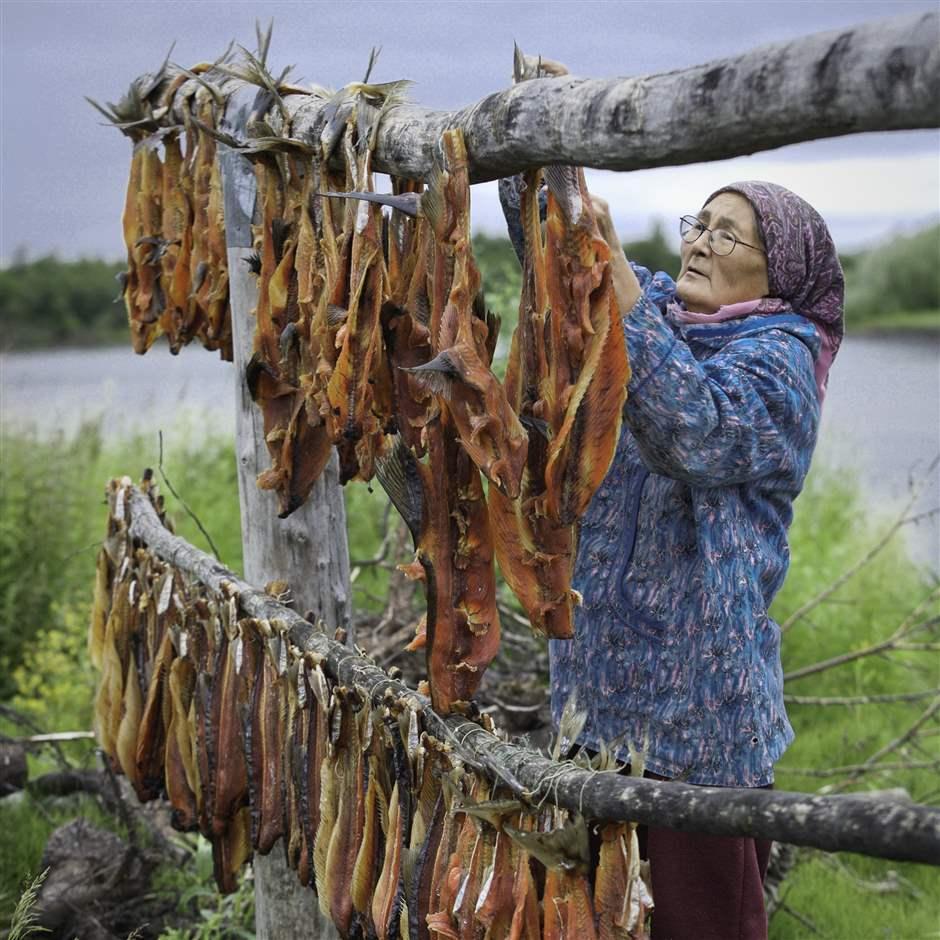U.S. Should Revise Misguided Alaska Land Management Plan
Trump-era policy stripped protections for 13 million acres in Bering Sea-Western Interior region, against Tribes’ wishes
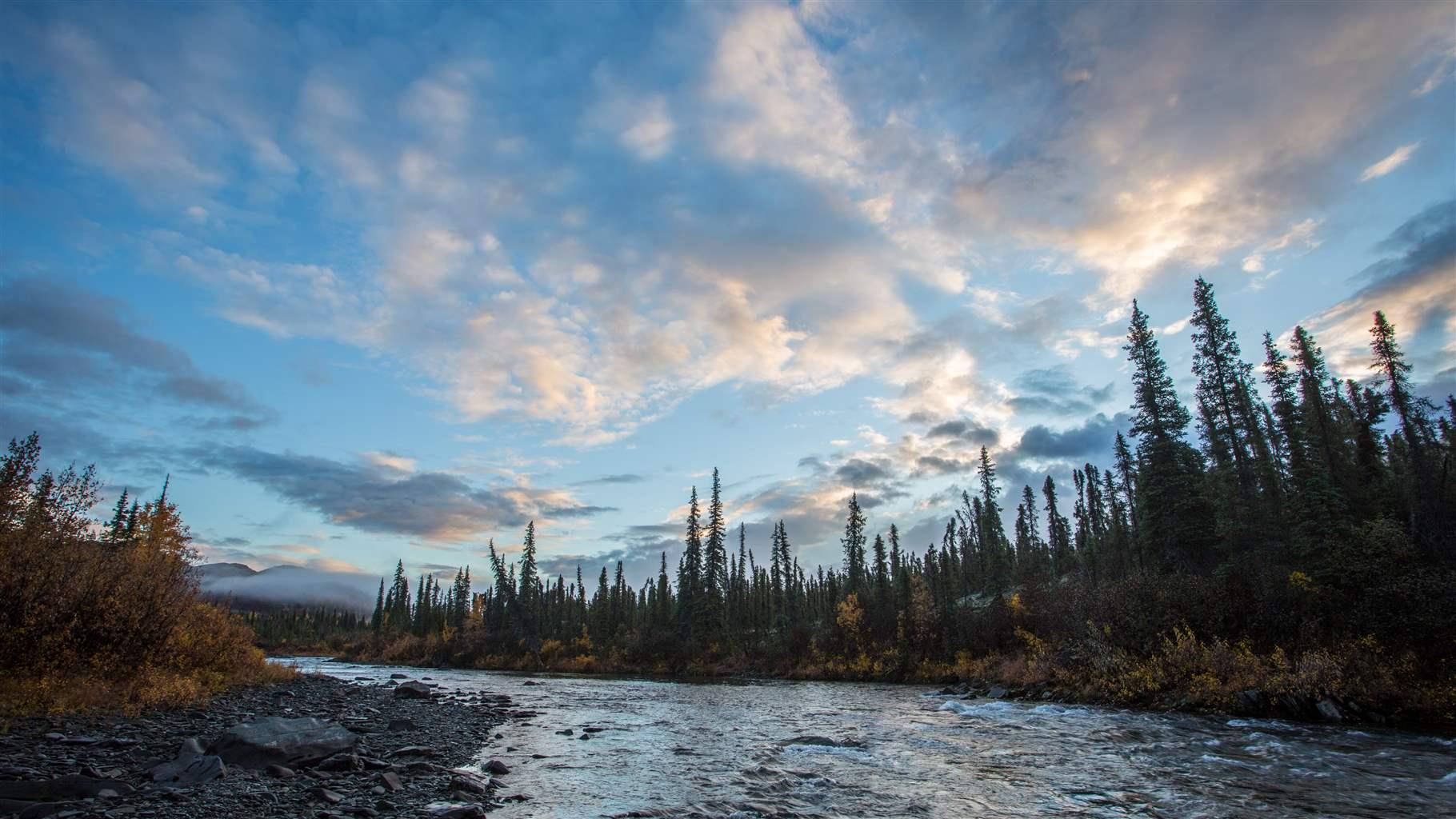
One day before Joe Biden was sworn in as president of the United States, the Bureau of Land Management (BLM) finalized a plan for a huge swath of western Alaska that eliminates existing protections for the landscape and dismisses nominations for additional conservation areas submitted by Indigenous peoples whose lives and ancestry are intertwined with the land. That final plan favors extractive development such as mining and drilling and poses a serious threat to wildlife, watershed ecosystems, and communities that this landscape has sustained for centuries..
Now, the Department of the Interior has an opportunity to address Tribal concerns and revise the plan to achieve greater balance and meet the agency’s multiple use mandate.
The BLM’s Bering Sea-Western Interior planning region is home to more than 65 Indigenous communities that have relied on the region’s abundant fish, wildlife, and plants—for food, clothing, building materials, and cultural practices—for generations. The vast BLM-managed area includes most of the Yukon River, Kuskokwim River, and Unalakleet River watersheds, as well as other critical ecosystems that federally recognized Tribes in Alaska have stewarded for thousands of years.
The January 2021 plan opens 99% of the Bering Sea-Western Interior to extractive development, despite the BLM previously identifying some planning area watersheds on which Tribes depend as “rare and irreplaceable.” The agency has also recognized “an internationally significant fisheries resource” that spans more than 2,000 miles of the Yukon River and its tributaries in the U.S. and Canada and provides food for thousands of people in the region.
Since 2014, Tribes in the region have asked the BLM to protect crucial watersheds and culturally important areas of the Bering Sea-Western Interior, and in 2019 they formed the 37-member Bering Sea and Interior Tribal Commission to advocate for land use decisions that reflect Indigenous priorities. Since President Biden took office, the commission has met five times with current BLM leaders, each time asking for an amendment to remedy the significant deficiencies in the 2021 Bering Sea-Western Interior plan.
Specifically, the commission has requested that the BLM use the plan amendment process to re-evaluate Tribes’ nominations for areas of critical environmental concern (ACECs) and revisit the agency’s decision to remove designations of all previously existing ACECs in the planning area. The agency should address the commission’s concerns as soon as possible, because implementation of the plan could potentially devastate Tribes’ food sources and customary uses of these lands and waters.
Updating the Bering Sea-Western Interior plan to respond to Tribes’ concerns would be consistent with Biden administration policies to improve relations with Tribes and safeguard ancestral lands, including:
- A joint secretarial order issued in November 2021 by the Department of Agriculture and the Department of the Interior to ensure that federal lands and waters are managed in a manner that protects treaty, subsistence, religious, and cultural rights of federally recognized Tribes. Under the order, the agencies must give due consideration to Tribal recommendations regarding management of federal lands.
- An executive memo from the White House Office of Science and Technology Policy and the Council on Environmental Quality, also issued in November 2021, that recognizes the importance of Indigenous traditional ecological knowledge and commits to using that knowledge to inform federal decision-making and benefit Tribes.
- A presidential executive order on “tackling the climate crisis at home and abroad,” signed soon after President Biden was inaugurated, establishing a national goal of conserving 30% of U.S. lands and waters by 2030 and committing to engaging substantively with Tribal governments to implement this goal.
The Biden administration can make good on these commitments to Tribes by revising the BLM Bering Sea-Western Interior plan to address Tribes’ concerns and creating clear requirements on consultation, co-stewardship, subsistence, and conservation. Doing so would help build trust between the agency and Indigenous peoples of the planning area and help the region’s people, wildlife, lands, and waters thrive far into the future.
Suzanne Little works on The Pew Charitable Trusts’ U.S. public lands and rivers conservation program based in Anchorage, Alaska.


America’s Overdose Crisis
Sign up for our five-email course explaining the overdose crisis in America, the state of treatment access, and ways to improve care
Sign up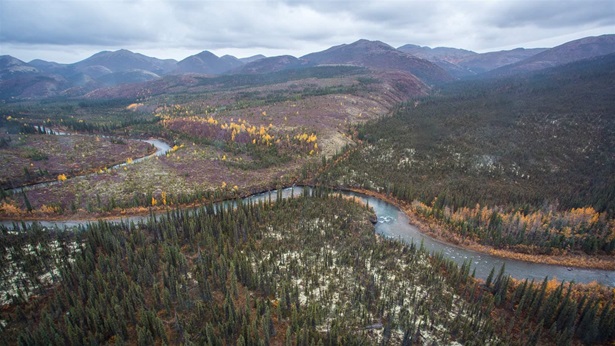
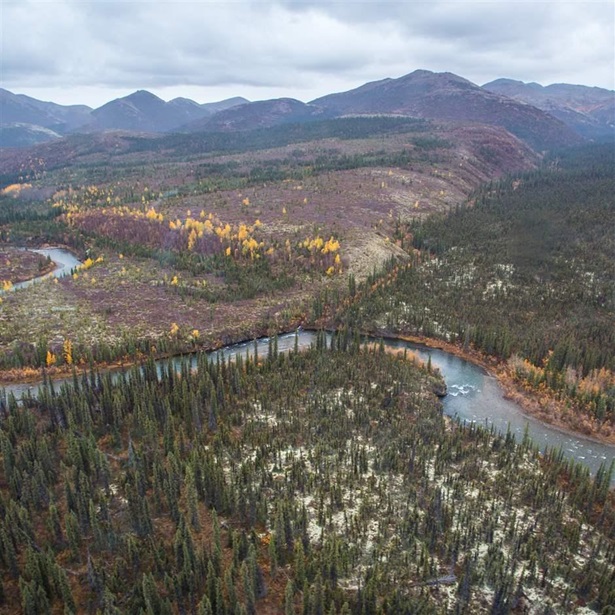
Bering Sea Western Interior at Risk of Resource Extraction
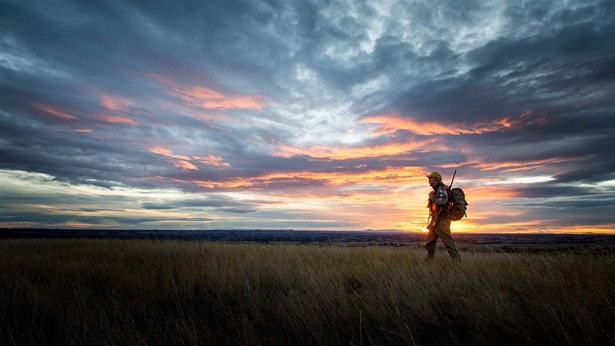
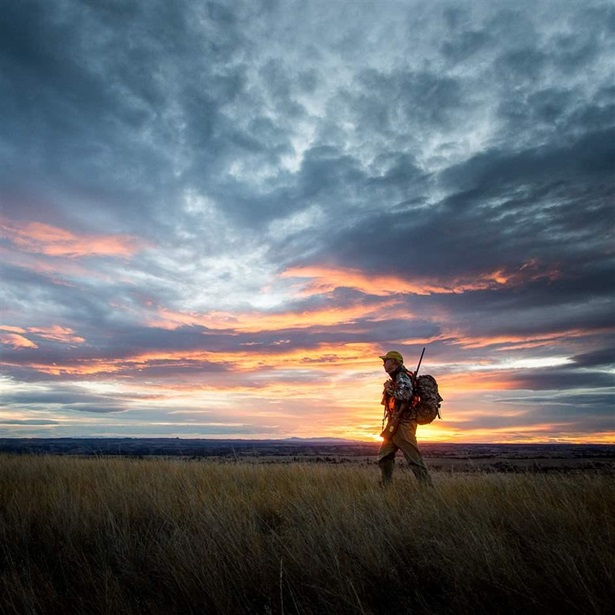
Protecting Public Lands to Fight Against Climate Change
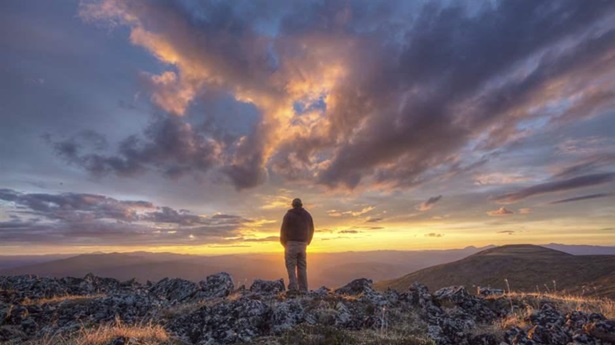
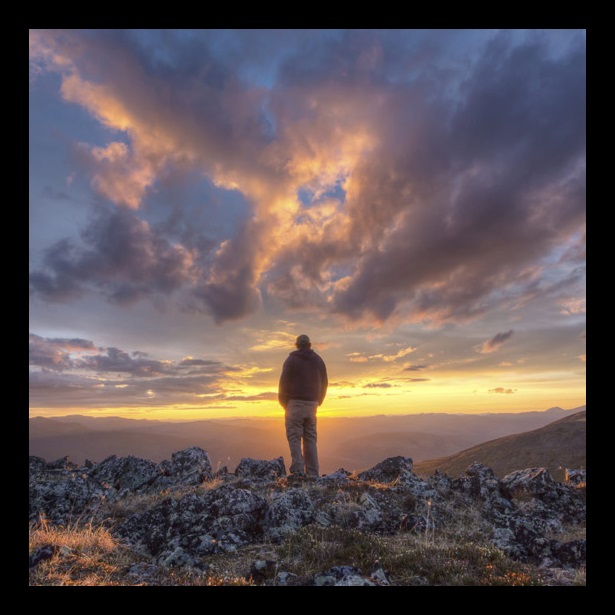
At 75, BLM Should Increase Focus on Conservation
